A bit about beavers
We’ve been observing the beaver activity at a nearby wetland lately. Their lodge is not too far out on the pond, surrounded by water.
In the summer we would see turtles sunning themselves on the logs, and occasionally a kingfisher perched on top. But these days it’s grayish brown and very quiet.
Of the beavers themselves, we’ve seen precious little. Mostly they look like a zipper, unzipping the surface of the water — far away.
The other night we saw this guy swim over to this log jutting out of the water, and hide. We watched him. He watched us. It was a stand-off. But how can you not love a beaver who plays hide-and-seek?
Mostly we’ve seen their signs lately as they chip away at the trees. This is something we didn’t see in the summer when there were plenty of green plants around for them to eat. We’ve been observing two trees in particular, this one being the most dramatic example of beaver persistence. The leaves all around it on the ground and in the water are red oak.
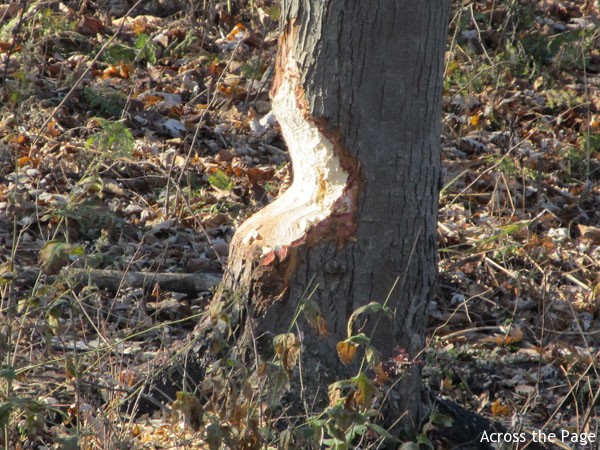
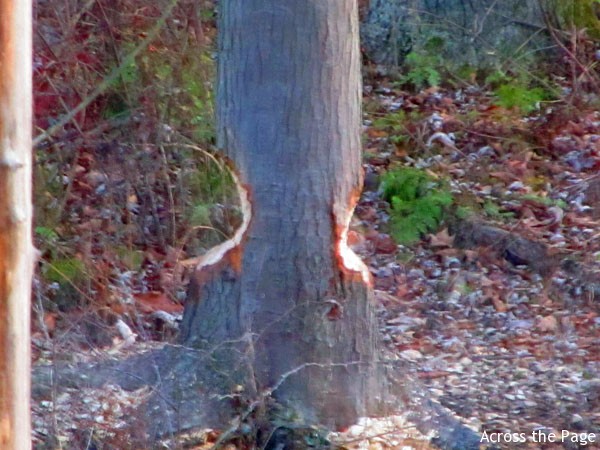
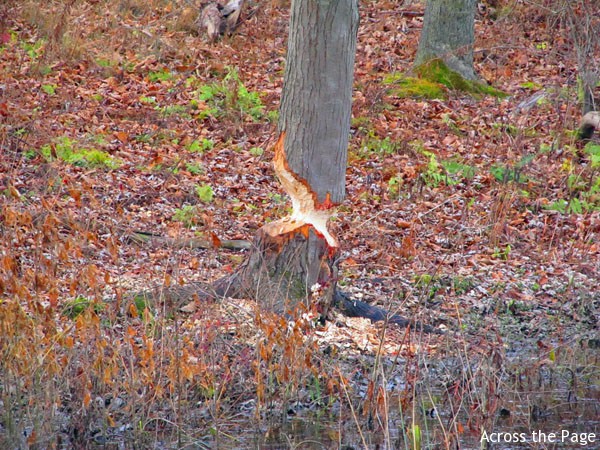
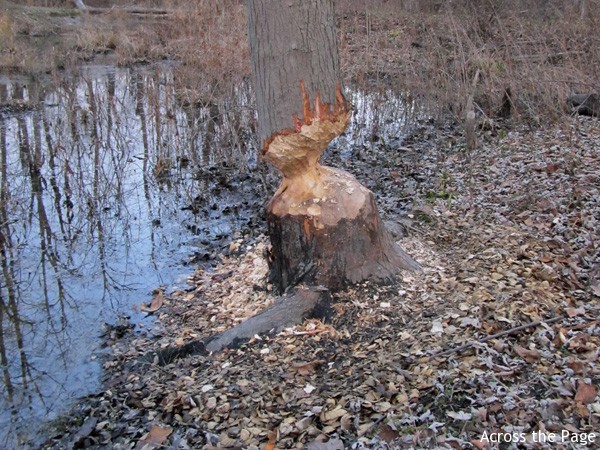
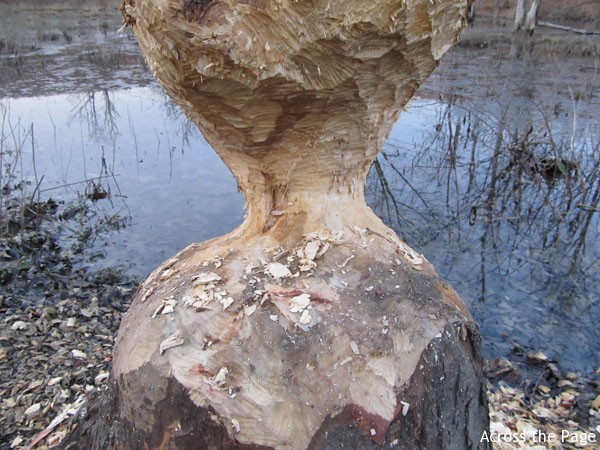
My husband thought he could probably push the tree over at this point, but he wanted to leave the satisfaction to the beavers.
I look at this tree and wonder: why this one? What made the beavers select it over all the others around? And why are they (literally) chipping away at it — merely for food? The thick ring of wood chips around the base of the tree suggests otherwise. There’s no way this tree could be hauled out to their lodge… is there? Time will tell. (There is a third option, of course. The beavers may be carving a mermaid masthead for their yacht. We shall see…)
Beavers are responsible for $20 million worth of damage every year, according to one book we read. They eat only living trees, and their restless altering of their environment can create problems. The librarian who checked out our haul of beaver books last week told us of another creek nearby with beavers, suggesting that they were the reason that neighborhood flooded so badly back in September.
Afterward I remembered a story my brother told me. He lives south of us, in Pennsylvania, and the day after the September floods he took his chainsaw out to clear roads wherever he could. He went to a section of road where he knew beavers had built dams, expecting it to be flooded. But the water was cascading neatly over all three dams, as though they had been expertly engineered for just such an occasion. The water was still within the banks, and the dams were still intact. One beaver was surveying the scene like an anxious artist; he slapped his tail and disappeared when he saw my brother. The story made me wonder about the role beaver dams may (or may not) play in floods.
When I was growing up and we would visit the Adirondacks in the summer, we often encountered beaver dams across the streams. They were fun to paddle over in a canoe. You would have to gain some momentum, driving the boat halfway over so that the person in front was suspended in mid-air for a moment before the nose of the canoe plunged, see-saw-like, into the stream below the dam. Sometimes beaver dams would raise the level of certain lakes so that the beaches disappeared, and people would find and tear out the dams.
To my knowledge there is no dam on the pond we visit locally. It’s not really part of a stream; it’s a wetland that was once part of the river, till the curve of the river shallowed out and straightened. At one time a brick-making factory was located at the pond, manufacturing bricks from the mud at the bottom. The bricks rebuilt the town when the entire business district — then constructed of wood — was ravaged by fire in 1849. Now it’s a nature preserve where countless other forms of life make their habitations — including beavers.
I have to include this puzzling picture from July 12. The two-toned face and habitat suggest it’s a beaver, but the tail isn’t visible. It may be a woodchuck, but one definitely out of its element. I lean toward thinking it’s a beaver with only the fluff at the base of the tail showing.
And this is a blurred picture of a muskrat, also taken on July 12. Definitely more rat-like, and with a different posture than the beaver. The two-tone brown described in the Handbook of Nature Study is apparent, though the muskrat itself looks shaggier than I expected.
You’d think that with the ability to locate where the beavers have been working, we’d see some tracks. But it’s all dead leaves at the base of the above tree and the bank. Near other trees, there is more mud, and we’ve seen tracks, but not beaver tracks. Just raccoons, birds, and deer so far.
I’m not sure about these next two. My father tells me muskrat tracks include a tail-drag mark. The Handbook of Nature Study says that you can see webbing on beaver tracks and toenail marks on muskrat tracks. Mostly I see just toe marks, some long and skinny, some round. So, mystery tracks.
There is a muskrat lodge at another marsh we visit, and I had my daughter compare the two animals’ dwellings for a writing assignment. She did a good job.

All of this is commonplace to trappers and other outdoor ramblers, but the girls and I are enjoying getting to know (and sometimes being bewildered by) these various water critters.
There are plenty of great nonfiction beaver books at the library, as well as Thornton Burgess’s book about Paddy the Beaver. He has one about Jerry Muskrat too, but though we’ve met Jerry as a character in other books we haven’t read it. I found and requested Charlie the Tramp from our library system, and I’m looking forward to revisiting this book from my childhood. It’s by Russell and Lillian Hoban of Frances-fame, and they also have a book about muskrat siblings called Harvey’s Hideout. The muskrats aren’t very well behaved, but I always liked the book as a child (I thought Harvey’s secret den was very cool) and may request that one too. (I wrote about it in this post.)
So there’s my bit about beavers, with assorted other observations thrown in. I’m submitting it to the Outdoor Hour Challenge for December at the Handbook of Nature Study. Click on the link for more great beaver resources.




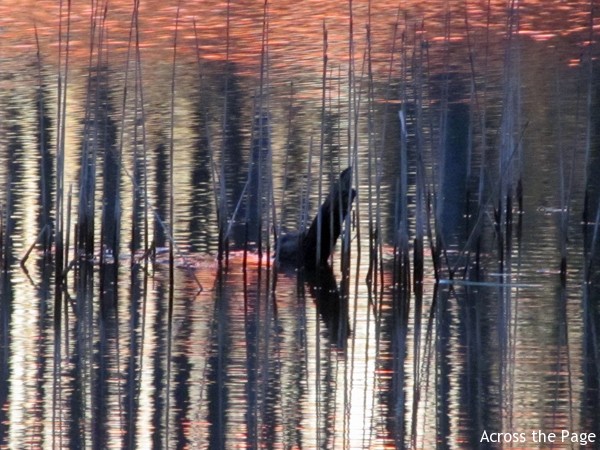
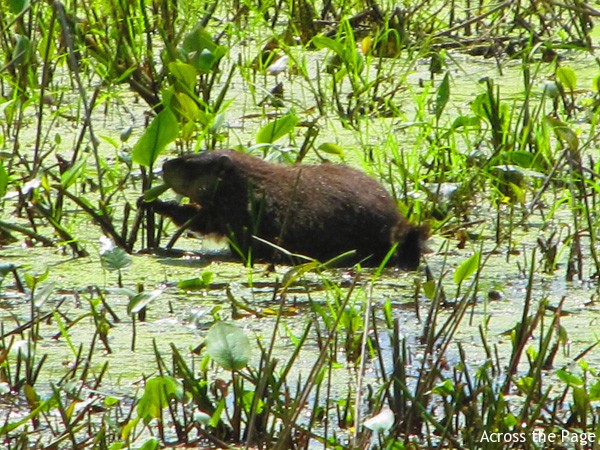
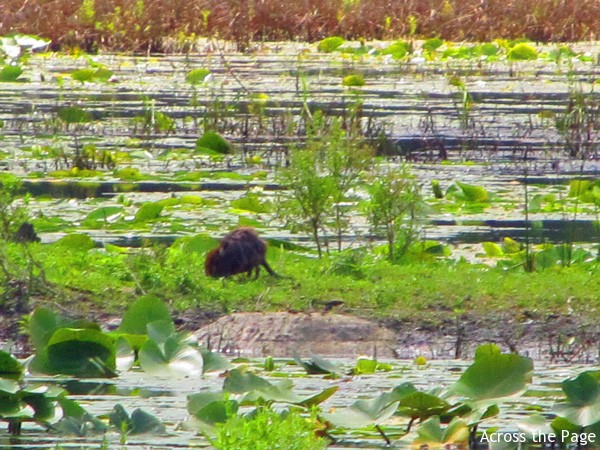

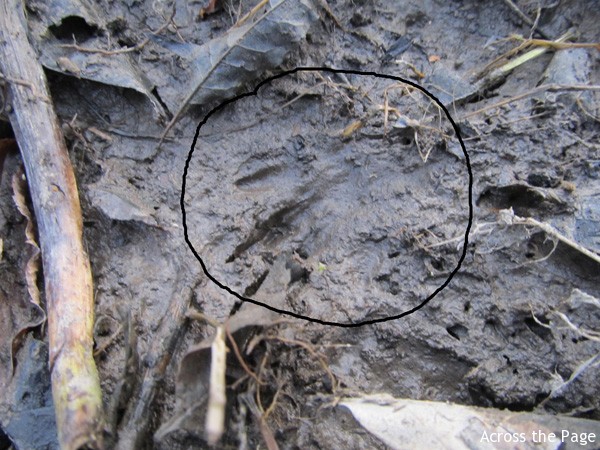
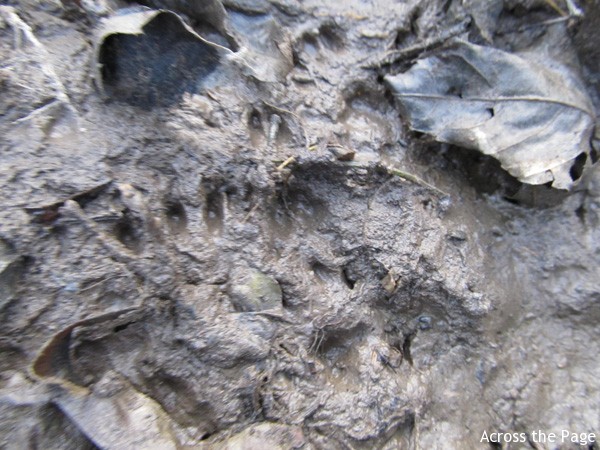


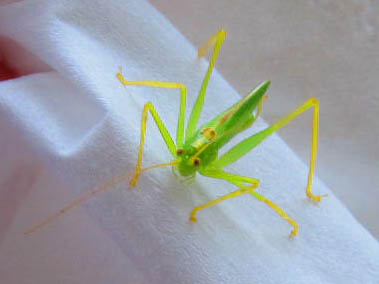
2 Comments
Heidi Perryman
I’m was so pleased to read you are keeping an eye on your beaver activity! Of course those books from the library forgot to mention the financial BENEFIT beavers do with their restorative watershed work. People don’t talk about that as much, but this paper is a start. http://www.martinezbeavers.org/wordpress/wp-content/uploads/2011/03/ECONW-Escalante-Beaver-Values-Report-0211.pdf
Beavers don’t eat the actual wood, just the cambium layer, and they take down big trees to get to the little branches at the top. You will be surprised how fast the parcel that up into bite sized bits once it falls over. They will also use the trunk for buildling if they need it, and don’t worry they can haul it wherever they need to go.
Here’s some great beaver footprint advice from Bob Arnebeck whose website about beavers will tell you everything you want to know.
“The best tracking guide I’ve found in Paul Rezendes, Tracking and the Art of Seeing: How to Read Animal Tracks and Signs. He says that the print of the beaver’s front feet usually has only three toes,sometimes four. Raccoons print their five lovely toes. This confirms what I usually see, though I rarely see the front footprint of the beaver. To
me, the trail of a beaver in mud and snow never seems entirely comfortable, while a raccoon’s endless two-by-two trail suggests that when going along the muddy margins of ponds and rivers, the raccoon is quite at ease (though hungry.)”
Thanks for the lovely read and check out our website for beaver information and photos. Our urban population is easy to see and well watched!
Heidi Perryman, Ph.D.
President & Founder
Worth A Dam
http://www.martinezbeavers.org
Barb-Harmony Art Mom
I totally enjoyed this entry! My favorite part was the sequence of photos showing the beaver’s progress at falling the tree. We have seen where they fall a tree and then sure enough the rains come, swell the creek, and the log is floating. They are truly engineers of the waterways.
Thank you so much for sharing your entry with the OHC.